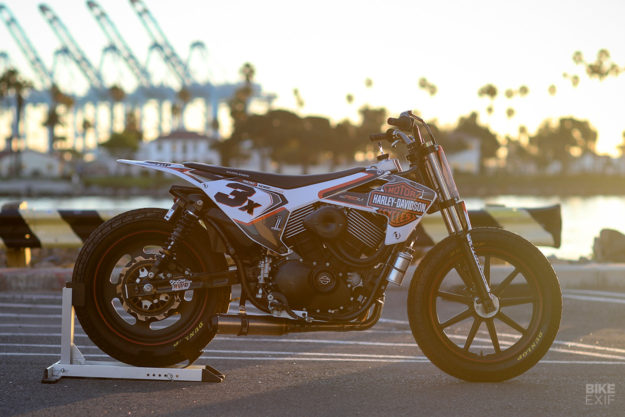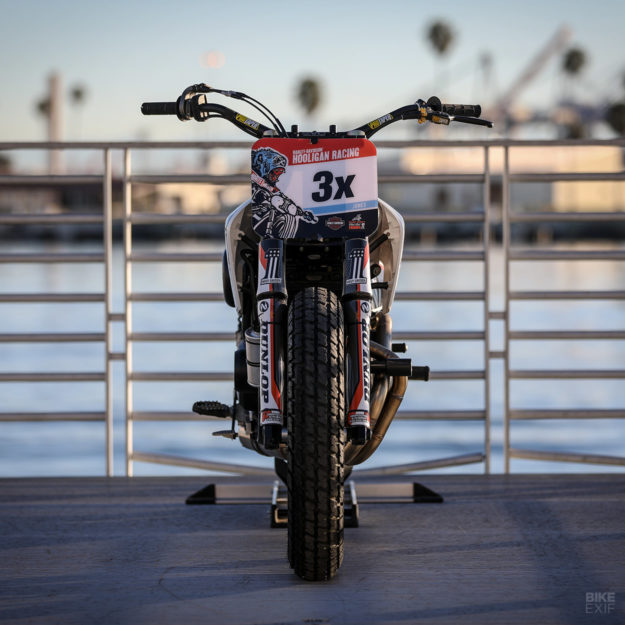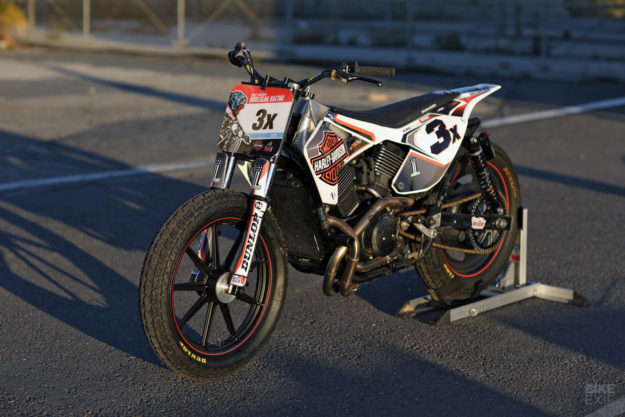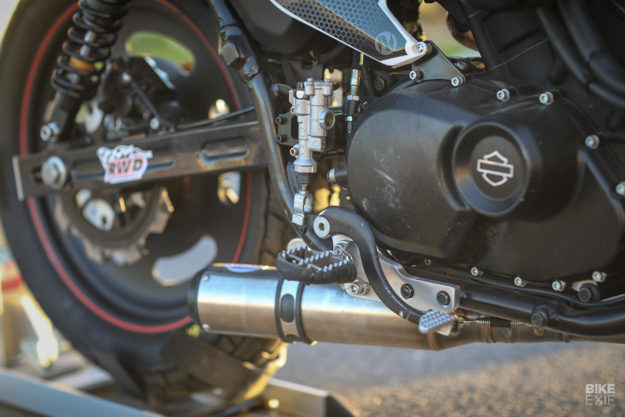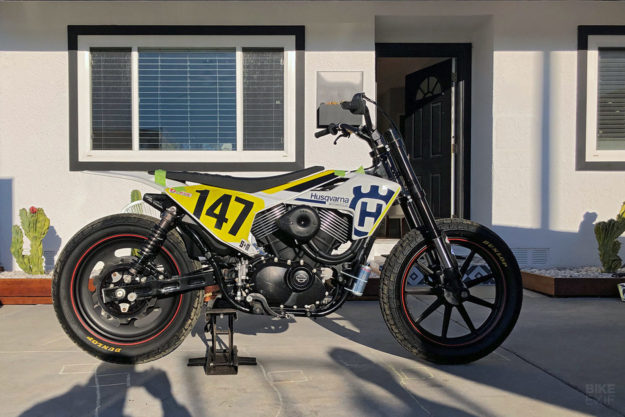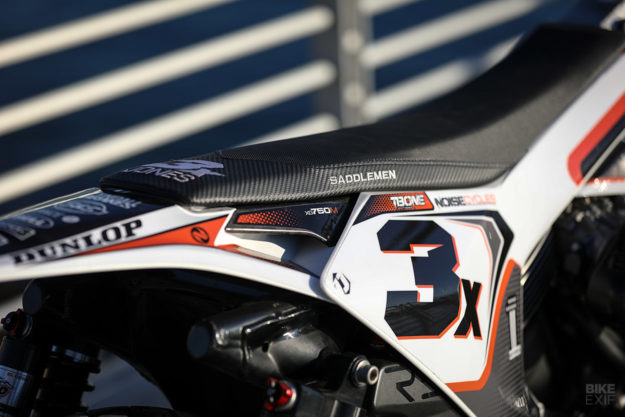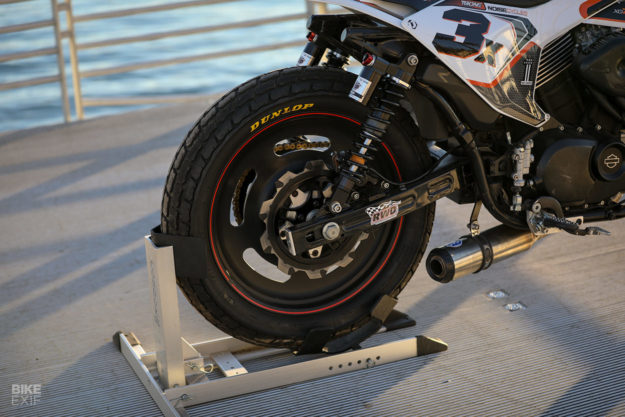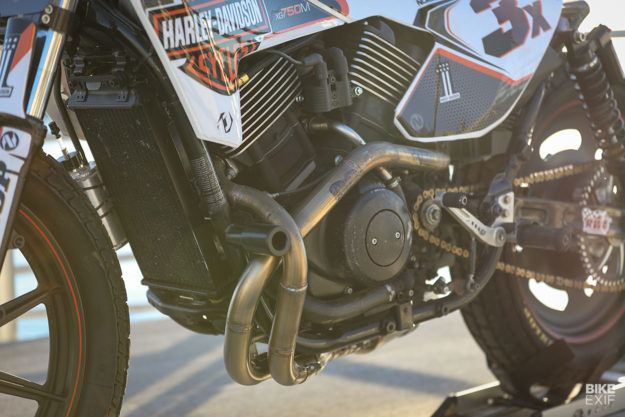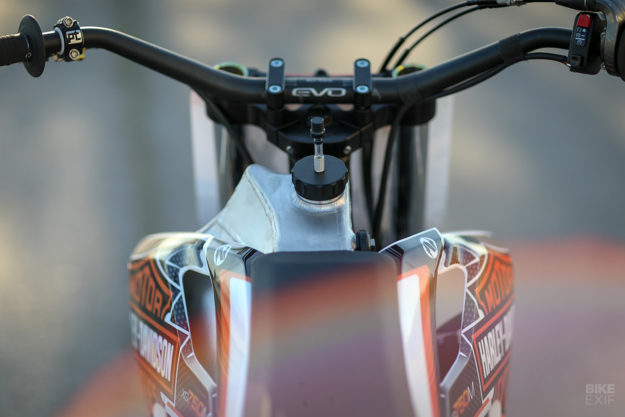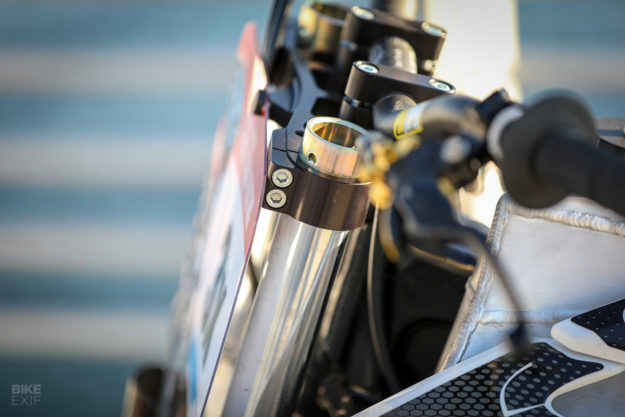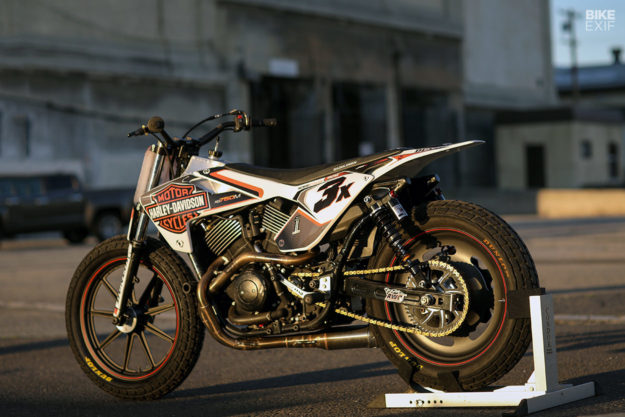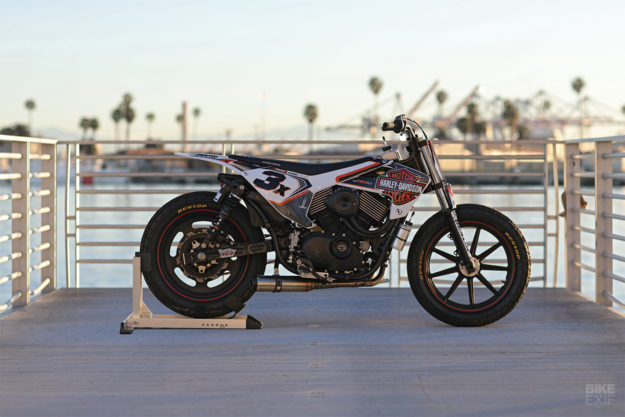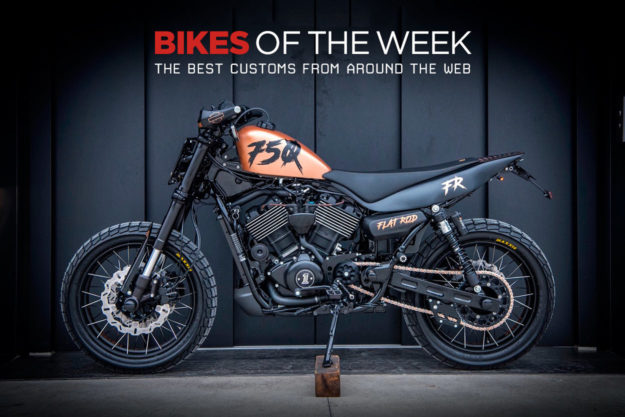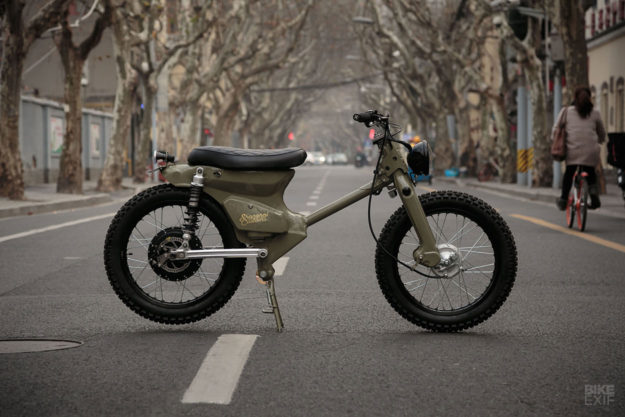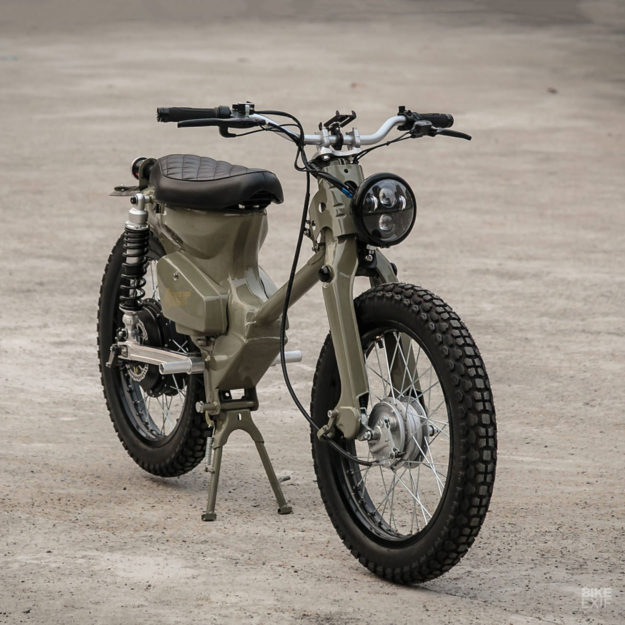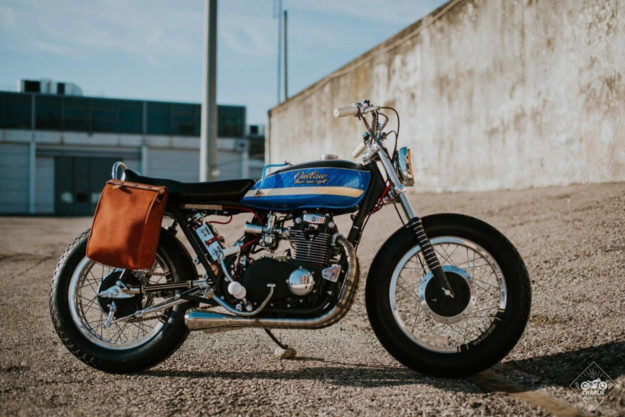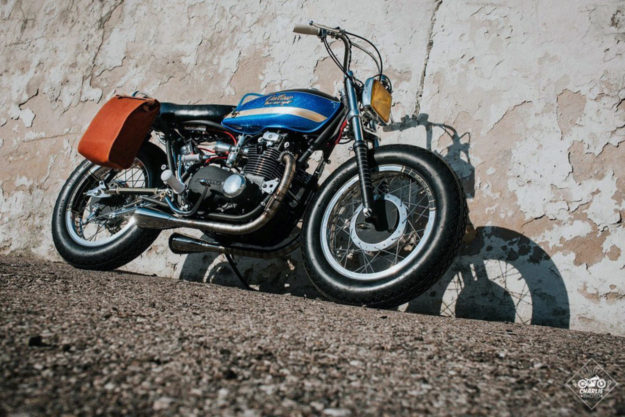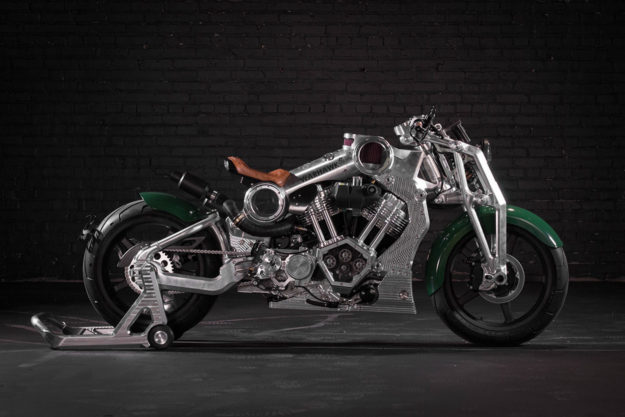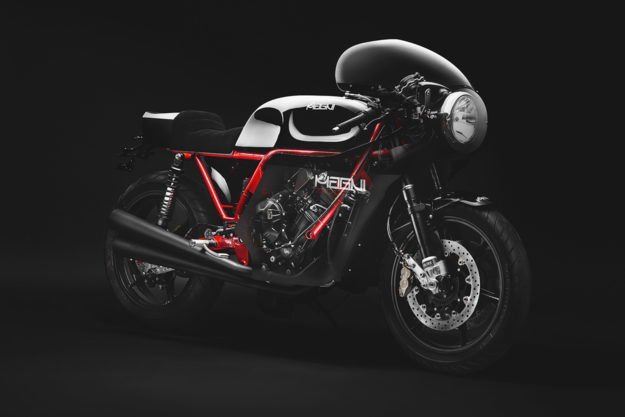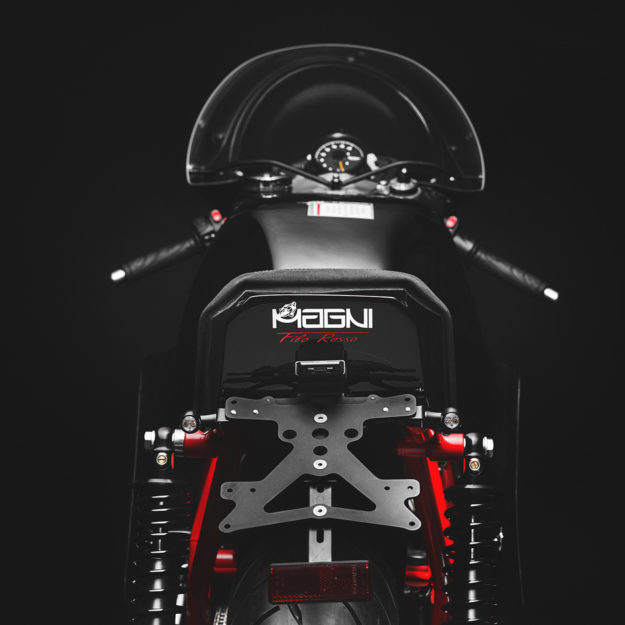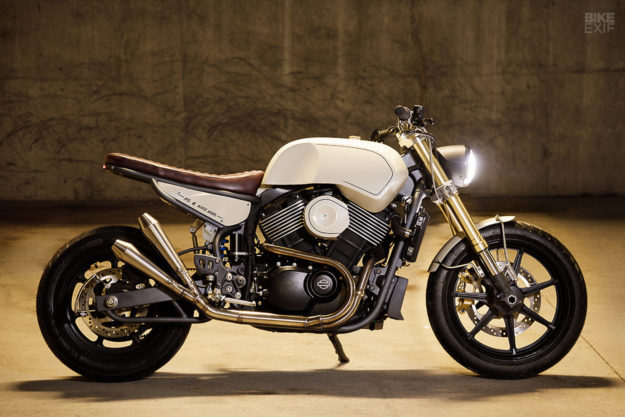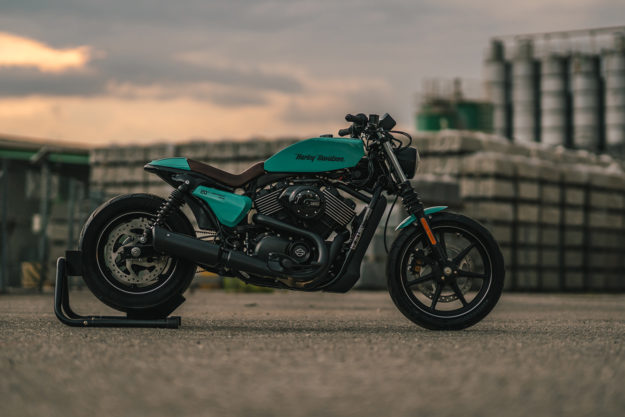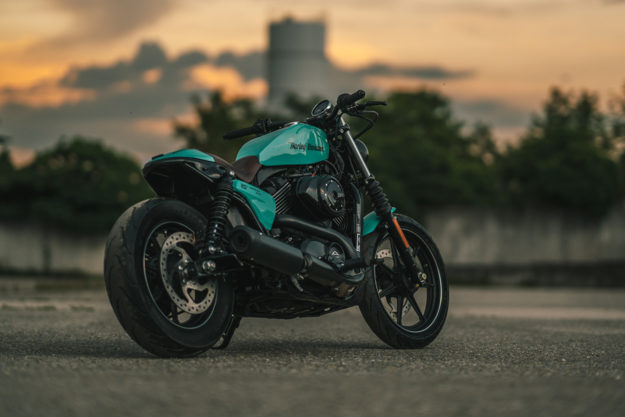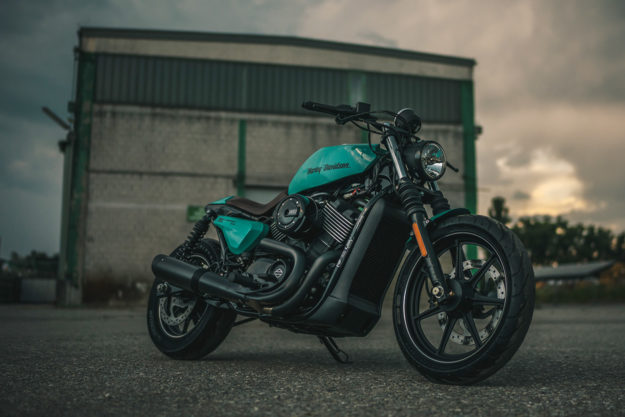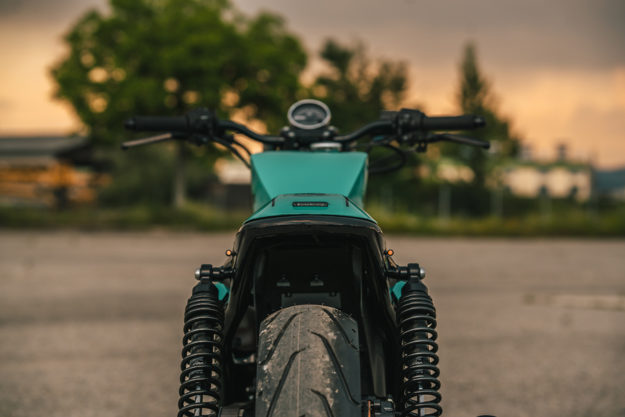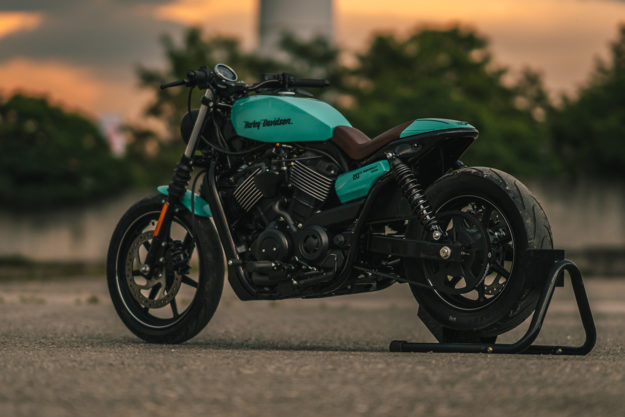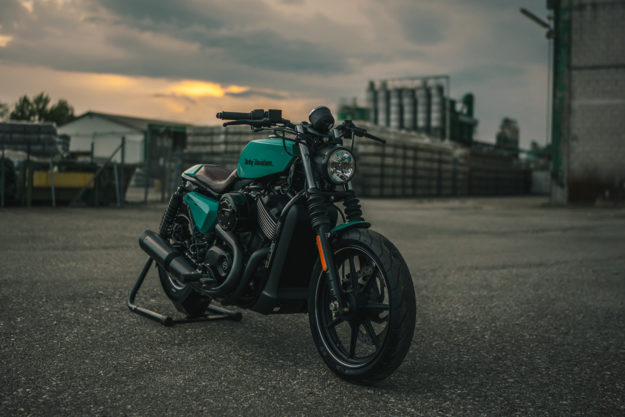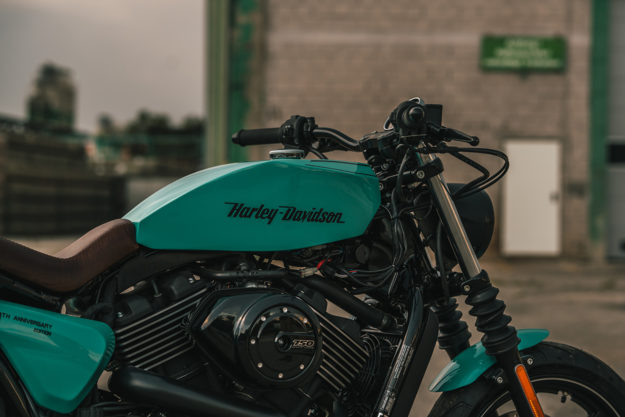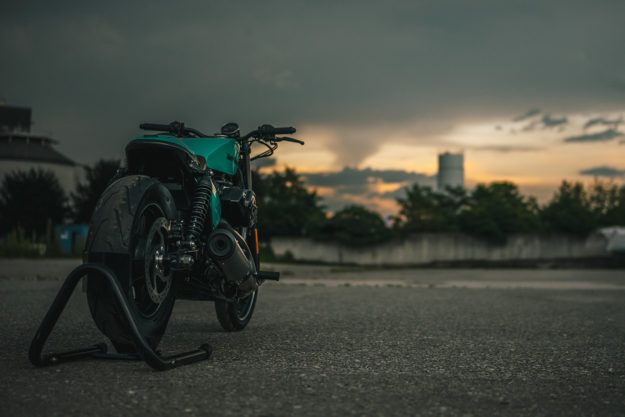
The Street 750 had a hard time when it launched. The press found a lot to nitpick, and dyed in the wool Harley fans bemoaned its liquid cooling and smaller-than-a-Sportster engine.
But you know who wasn’t complaining? The buyers. Harley-Davidson have already sold 35,000 Street 750s worldwide, and it’s been the leading ‘competitive cruiser’ in the US for two years running. The Street has successfully reeled in a broader audience—one with tighter budgets and less affinity to the brand.

Harley’s now swinging for the fences again with a new model—the Street Rod XG750A. And if you’re not a fan of the original, don’t fret: this one’s pretty much all-new.
Full disclosure: I have no opinion of the first-gen Street because I’ve never ridden it. I was supposed to put some miles on one before this launch, but things just didn’t pan out in time. So I flew to Marbella, Spain, with an open mind and no preconceived ideas about the motorcycle I was there to report on.

So what exactly is the Street Rod XG750A? According to H-D product planner, Jeff Strunk, it’s a bike built for customers. To figure out what direction to take the Street platform in, Harley literally polled their target audience.
“They said ‘I live in the city, I need to get around every day, I need a bike that can handle that. Traffic conditions are taxing, I need to be able to maneuver,’” Jeff explains. “They also said ‘I don’t just stay in the city—when I have time, I get out on weekends and I want a bike that can do that as well. So give me a dynamic motorcycle, that has power, performance, style.’”

The ‘Rod’ part of the name suggests a little hot-rodding, which is exactly what Harley have done here. They’ve taken the Revolution X 750 powerplant from the Street, and upgraded it to create a new ‘High Output’ version.
The mods include 42mm dual throttle bodies, new cylinder heads, and a new camshaft. Then there’s a new high-flow air cleaner, and a redesigned muffler. The engine now makes 18 percent more horsepower and 8 percent more torque, bringing the numbers to 69 hp and 65 Nm respectively.

The chassis has also been overhauled. The frame itself is new, with a sharper steering head angle than the Street (27 degrees versus 32). It also has a higher seat, more ground clearance and between 37 and 40 degrees of lean, depending which way you’re turning.
You also get 43mm upside down forks and piggyback shocks with more travel—but there’s zero adjustability, other than preload on the rear. The swingarm’s longer too, but the overall wheelbase is shorter. The bike rolls on a pair of stunning 17” alloy wheels, with a seven spoke split design. Two piston calipers handle braking duties, with two 300mm discs up front and one out back. ABS is, naturally, standard.

When I said I had no preconceived ideas heading into this test, I wasn’t being completely transparent; ever since the Street Rod was announced, I’ve been iffy on the styling.
HD’s industrial design manager, Frank Savage, threw around words like ‘hooligan,’ ‘bad-ass’ and ‘hot rod’ in his presentation, and for the most part, it works. The Street Rod is more bulldog than cruiser, and has some standout parts that I’d love to see on more Harleys.
The new tail section, for example, is absolutely killer—right down to the sporty LED tail light embedded in the rear. The air cleaner—inspired by vintage hot-rods—is another gem, and looks more like an expensive catalog upgrade than a stock part. And the new front fender and brace are pretty neat.

But I’ve never been nuts about the Street 750’s flat-and-wide tank. Much to my dismay, Harley decided to keep it—pitching it forward for a more aggressive line. Frank explains that it’s part of the Street DNA, that it’s a practical size (it holds 3.5 gallons/13.1 liters), and that customers like it. I still think it looks a bit awkward here, but I can live with it.
It’s the cockpit that kills it for me though; that fly screen just doesn’t seem to match the rest of the bike, and feels like a bit of an afterthought. You can pop it off surprisingly easily, but you wouldn’t want to—it masks a huge gap between the speedo and headlight, and hides an ungainly support bracket and cables.

Harley’s given the Street Rod drag bars for attitude, but put them on risers to get the positioning right. The speedo sits above the bars, in an easy-to-read position. It’s a combo design, with an analogue speed readout and a digital display that cycles between an odo, trip meter, clock and RPM / gear position indicator. For some unknown reason, the button to cycle through modes is on the right—so your left hand obscures the display when you use it.
At least the turn signal switch is on the left side of the bars, where it belongs—unlike the left/right switches used on some Harleys. The Street Rod also comes with a built-in immobilizer that works with a proximity fob, but still uses a key to switch on.

The overall fit and finish is surprisingly good for what is supposedly a ‘budget’ bike (with non-US models built in India no less). I would have liked to see adjustable levers, and the switchgear felt a bit flimsy, but these are minor gripes. And they’re quickly forgotten when you consider details like the stunning, and highly effective, bar-end mirrors.
Plus there’s serious potential for customization; Harley-Davidson had a XG750A from Shaw Speed & Custom on display (below), along with the Motor Company’s Street-based flat track prototype, the XG750R. Both are showstoppers.

You can get the Street Rod in Vivid Black (gloss black) for $8,699. If you want to pay a little more, you can specify Charcoal Denim (matte grey) or Olive Gold (metallic olive) for $8,994. I ended up on a Charcoal Denim test unit, but I reckon Olive Gold is by far the best looking option.

Hopping onto the Street Rod it’s clear that, while it may have shed its cruiser stance, a little cruiser DNA lingers on. The relationship between the seat, bars and pegs is spot on for lively, upright riding—but the pegs themselves are a bit of a pain.
They’re really small, a touch too high, and too far apart. With a wide tank and a hefty engine to clear, it felt like my knees were in two different time zones. I got used to this stance surprisingly quickly though, but there was another issue that plagued me all day…
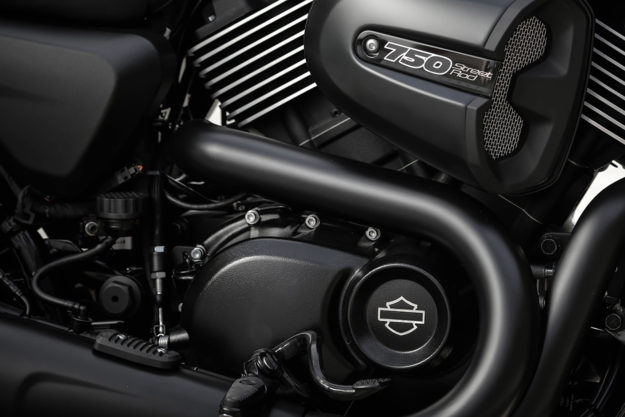
The right-hand side arrangement is, frankly, terrible. The Street Rod’s exhaust header is pretty beefy and it’s right up against your heel. So Harley have wisely added a heel pad to stop your boots from melting.
Except that means there’s no comfortable placement for your foot. You either need to rest your heel on the pad, which leaves your toes pointing out, or rotate your heel off it, with your toes pointing in. Or you can try to slide your foot forward on the peg, where it prematurely connects the extremely compact brake lever. None of these positions is particularly comfortable—but the only true fix is a new, slimmer exhaust.

With that out the way, what’s it like to ride the Street Rod? Harley mapped out a twisty route through the hills of Andalucía in southern Spain—including the mind-blowing Ronda road. It meant less city riding, and more time throwing 516 pounds (234 kilos) of motorcycle through an endless mix of corners, both tight and sweeping.
Our group was riding at a faster-than-average pace, and in an environment where few Street Rods will probably spend the majority of their time. But we were having a total blast. Whether I was flicking the Street Rod through quick corner sequences, or doing slow U-turns for repeated photo passes, the bike’s heft was never apparent.

I did notice that it was a bit skittish in corners when pushed really hard, but it still held its line all the same. I figured it was down to the suspension or tires, so I pushed the preload up a click and immediately felt a slight improvement. (And by ‘I,’ we’re talking about the friendly Harley guy with the preload spanner.)
The front forks are a touch too soft for a big South African like myself, and had a tendency to dip under heavy braking. As for the brakes, I’d describe them as adequate: they didn’t blow me away, but they kept me out of trouble. My test unit did have an annoying squeak on the back pads though, but it didn’t seem to hamper their efficacy.
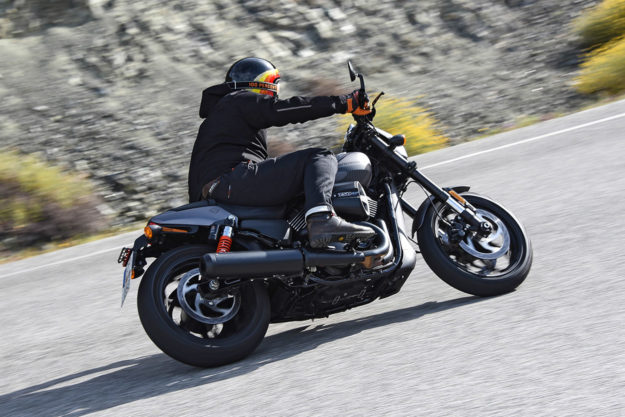
All told, the Street Rod is a nimble and playful motorcycle, and I’m a big fan of its power delivery too. No, it doesn’t make stump-pulling torque down low, like its big cousins. Instead, it rolls on smoothly and predictably—and then comes alive between 4,000 and 5,000 RPM, with the rev limiter hovering at 9,000.
Experienced riders might find the Street Rod a bit slow off the mark, but the tradeoff is a less intimidating ride for newbies. And once you find that sweet spot, hitting it on the way out of corners is a joy. It’s pretty manageable in town too, happy to chug along in second gear when traffic gets tight and the pace slows down.

You’ll hear the rev-happy engine’s whir more than you’ll hear the exhaust though. For all of its heft it’s a pretty subdued unit—though it does give off a nice hum if you’re riding behind it.
Flipping through the 6-speed box is easy enough, as long as you give each gear a solid click. The mechanical clutch is rather light too, but I occasionally had to send out a search party to find neutral (or I would find neutral, but the light wouldn’t come on).

We had Jeff and Frank riding with us all day, and neither of them had any problem answering our questions or listening to our gripes. What’s more, they really listened—you could see the gears turning as they digested every ounce of feedback, regardless of how minor it seemed. It’s this sort of attitude that birthed the Street Rod, and has me excited about where the range could go.
So yes, there are a few quirks to remind you that this is one of Harley’s more affordable models. But there’s also a lot to rave about, and it certainly doesn’t feel ‘cheap.’ New riders will love the way the Street Rod covers all the basics with minimal fuss. And more experienced riders will enjoy pushing it to its limits.

Both will appreciate what the Street Rod really is: a sporty roadster with hooligan looks, at a price that makes owning a Harley-Davidson just a little bit easier. Even if Harleys aren’t your thing, it’s worth a look: It comes in at a hair under the Triumph Street Twin, and at a similar price to the Yamaha SCR950. And although the Sportster Iron 883 only costs a few dollars more, the Street Rod’s definitely the better handling of the two.
A Harley that handles well and doesn’t break the bank? I can get behind that.
Harley-Davidson International | Instagram | Images by Stefano Gadda and Lionel Beylot.
Wes’ gear: Bell Moto 3 helmet, 100% Barstow goggles, Holy Freedom fleece neck tube, Rev’It! Stealth Hoody, Saint Unbreakable gloves, Saint Model 1 jeans, Stylmartin Red Rock boots.

